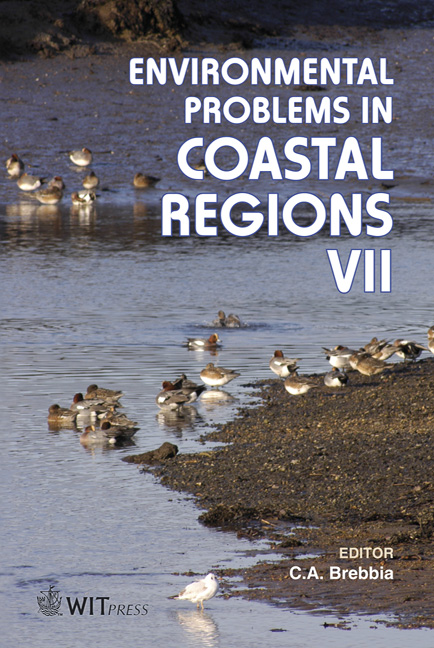Saline Stratification And Its Influence On Fine Sediment Transport In A Semi-enclosed Tidal Lagoon, West Sussex, UK
Price
Free (open access)
Transaction
Volume
99
Pages
10
Page Range
139 - 148
Published
2008
Size
408 kb
Paper DOI
10.2495/CENV080131
Copyright
WIT Press
Author(s)
S. B. Mitchell, H. M. Burgess, D. J. Pope & A. Theodoridou
Abstract
Mathematical models of solute mixing and sediment transport in estuaries rely heavily on the provision of good-quality field data. Observations of salinity, suspended sediment concentration and velocity at one of the tidal limits of a semi-enclosed tidal lagoon in Southern England (Pagham Harbour, West Sussex, UK) are presented, which illustrate how the natural processes of tidal incursion and solute mixing have been heavily modified as a result of the construction of sea walls dating back to the 18th Century. These observations, made immediately downstream of two parallel tidal flap gates by a conductivitytemperature- depth (CTD) profiler, and also using velocity sensors on bedmounted frames to measure the velocity at 2 fixed depths, have yielded a set of results covering 11 tidal cycles over the period 2002-2004. It is clear from the results obtained that over a typical tidal cycle the highest vertical salinity gradients occur in the 1-2 hours immediately after the onset of the flood tide, and that subsequently, energetic mixing acts to rapidly break down this stratification. Under moderate-to-high fresh water flows (>0.3 m3/s), the break-down in vertical salinity gradient is more gradual, while under low fresh water flows (<0.2 m3/s), the vertical salinity gradient occurs earlier in the tidal cycle. The data also show that most of the sediment transport is landward, and occurs during flood tides. These observations can help to provide information about the appropriate techniques for managing siltation and pollution, including nutrient transport from sewage effluent waters, in estuaries where hydraulic flap gates are used to control the entry of fresh water. Keywords: tidal lagoon, stratification, suspended sediments, flap gates.Keywords
tidal lagoon, stratification, suspended sediments, flap gates.





